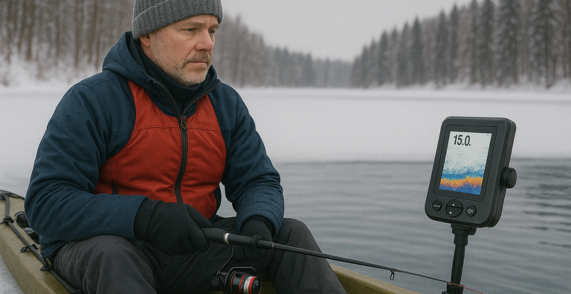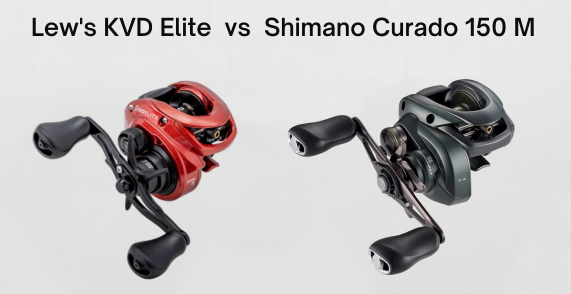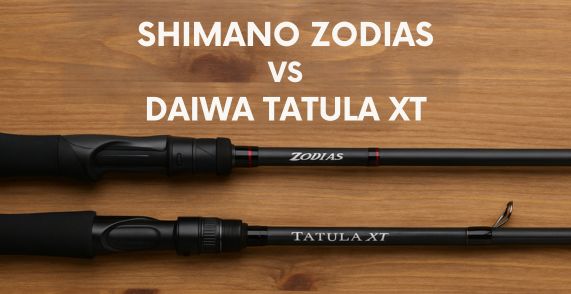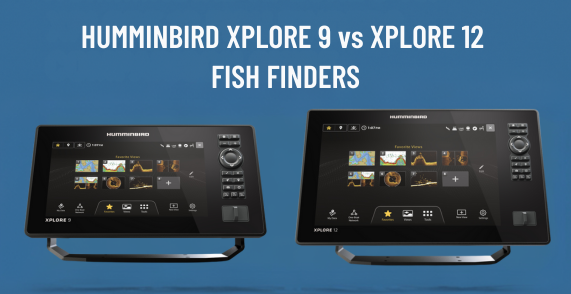In This Post
Key Takeaways
- Fish behavior changes dramatically in winter, with most species moving to deeper water (15-40 feet) where a fish finder becomes essential for locating them.
- The best kayak fish finders for winter fishing combine durability with cold-weather performance, such as the Humminbird Ice Helix 7 with water temperature display and CHIRP sonar.
- Winter fish create distinct sonar signatures, appearing as tight arches with less movement, often concentrated around underwater structures that your fish finder can identify.
- Proper mounting and battery management are critical in cold conditions, with LiFePO4 batteries maintaining 70-80% capacity even in freezing temperatures.
Winter kayak fishing presents a remarkable opportunity for anglers willing to brave the elements. While fair-weather fishermen store their gear for the season, those equipped with the right knowledge and technology can experience some of the year’s most productive fishing.
Success in winter comes from understanding cold-water fish behavior and using advanced fish finder technology to locate and target these concentrations efficiently.
Cold Water Fish Location: Finding Winter Hotspots
As water temperatures drop, fish undergo significant behavioral changes that directly impact your fishing strategy. Their metabolism slows considerably, causing them to seek deeper water where temperatures remain more stable.
Most game fish transition from shallow areas to depths ranging from 15-40 feet, making them much harder to locate without proper electronics.
Your fish finder becomes indispensable during these conditions. Different species establish predictable winter depth preferences that your sonar can help identify. Walleye typically hold in 20-35 feet during late fall, transitioning to 15-30 feet under ice.
Bass often retreat to deeper water structures, typically 20+ feet deep around rocky areas and ledges. Panfish concentrate in 15-25 feet of water near structure, while pike can be found at varying depths, frequently following temperature gradients your fish finder can detect.
Note that winter fish concentrate around specific underwater features that provide warmth, oxygen, and food sources.
Your fish finder excels at identifying these key locations – rocky bottoms and boulder piles that retain heat, creek channels and ledges creating depth changes for ambush points, submerged timber attracting forage fish, and points and humps forming current breaks where baitfish school.
The temperature sensing capabilities of quality fish finders prove particularly valuable in winter. By identifying thermoclines and temperature breaks, you can pinpoint areas where fish commonly suspend.
These subtle temperature variations often hold the key to locating inactive fish that might otherwise go undetected without proper sonar technology.
When scanning winter waters, pay particular attention to transitions between different bottom compositions. Areas where hard bottom (rock, gravel) meets soft bottom (mud, silt) often create prime winter holding spots.
Your fish finder’s bottom hardness reading can help identify these transitions, which frequently hold concentrations of baitfish and the predators that follow them.
Interpreting winter fish behavior through your sonar requires understanding that cold-water fish appear differently than their warm-water counterparts. Look for tight, well-defined arches positioned close to bottom structure.
Winter fish schools form tighter formations than in warmer months, showing less vertical movement between sonar pings. Baitfish schools appear more compact and stationary, creating distinctive signatures on quality fish finders.
Essential Kayak Fish Finder Setup for Winter Success
1. Selecting Cold-Weather Compatible Units
Winter kayak fishing demands specialized equipment that can withstand harsh conditions while delivering precise fish-finding capabilities. Not all fish finders perform equally in cold-weather conditions. For serious winter anglers, portable fish finders that combine durability with dual-season functionality work best.
The Humminbird Ice Helix 7 Chirp GPS G4 All Season stands out as the premier choice for winter kayak fishing. This versatile unit transitions between ice fishing and open-water kayak use, making it ideal for anglers who fish year-round.
Its superior cold-weather performance comes from components specifically designed to function in extreme temperatures. Alternative options include the Garmin Striker Vivid 5 and Lowrance Elite FS, both providing excellent performance in frigid conditions.
When selecting a winter-ready fish finder, prioritize these essential features:
- Water temperature display with customizable offset settings – Critical for identifying thermal patterns where winter fish congregate
- CHIRP sonar technology – Provides superior target separation in cold water where fish often school tightly
- GPS functionality – Allows marking productive winter spots that may be difficult to relocate visually
- Durable construction rated for extreme temperatures – Prevents screen freezing and component damage
- Long battery life in cold conditions – Ensures reliable performance throughout extended winter fishing sessions
The display quality becomes particularly important in winter conditions where glare from snow and ice can reduce visibility.
Look for units with high-contrast color palettes and brightness settings that can be adjusted based on lighting conditions. Many Fishing Zenith readers report that transflective displays, which become more visible in direct sunlight, perform exceptionally well during bright winter days on the water.
2. Strategic Mounting Solutions
Proper transducer mounting becomes even more critical in winter conditions where ice formation and extreme temperatures can damage equipment. The scupper mount system offers the most reliable winter installation for kayak anglers.
Scupper Mount Installation Process:
- Select a forward scupper hole that remains submerged when your kayak is loaded with gear
- Thread the transducer cable through the scupper hole into the kayak interior
- Mount the transducer using the scupper adapter system designed for your specific unit
- Secure all connections with waterproof materials to prevent moisture intrusion
- Route cables to avoid interference with paddle strokes and potential ice formation
This mounting method eliminates the risk of transducer damage from ice contact while maintaining optimal sonar performance. The scupper positioning also reduces the chance of debris interference that can occur with transom mounts in shallow winter water.
For kayaks without suitable scupper holes, the through-hull installation using marine-grade plumber’s putty works effectively:
- Apply putty inside the hull directly above the chosen transducer location
- Position the transducer level against the hull using a spirit level for accuracy
- Ensure direct hull contact without air gaps that could distort readings
- Allow full curing time before use to prevent detachment in cold conditions
Regardless of mounting method, conduct a thorough test of sonar performance before venturing into remote winter fishing locations. Cold temperatures can affect signal transmission, so verification of proper functionality is essential.
3. Battery Performance in Freezing Conditions
Cold temperatures significantly reduce battery performance, making proper battery selection and management crucial for winter kayak fishing. Standard lead-acid batteries can lose up to 50% of their capacity in freezing temperatures, potentially cutting your time on the water dramatically.
Lithium Iron Phosphate (LiFePO4) batteries offer superior cold weather performance compared to traditional options. These advanced power sources maintain 70-80% capacity even in freezing temperatures, providing reliable operation throughout extended winter fishing sessions. Their additional benefits include:
- Built-in Battery Management Systems (BMS) that prevent damage from extreme cold
- Fast charging capability even in cold conditions
- Significantly lighter weight for easier transport to remote winter fishing locations
- Longer overall lifespan, making them cost-effective despite higher initial investment
Power Management Tips for Winter Fishing:
- Monitor power consumption closely – typical fish finders use 0.4-0.8 amps per hour
- Carry backup batteries for extended trips in isolated winter locations
- Keep batteries insulated when not in use to maintain optimal temperature
- Consider units with power-saving modes that can extend battery life
- Pre-warm batteries before use by storing them in your vehicle during transit
Many experienced winter anglers use neoprene battery covers or small insulated containers to maintain battery temperature during fishing sessions. This simple addition can significantly extend operational time in extreme conditions.
Interpreting Winter Sonar Readings
1. Understanding Cold Water Fish Signatures
Cold water creates distinct sonar signatures that experienced anglers learn to interpret. Winter fish appear differently on your fish finder display compared to warmer months, requiring specific knowledge to maximize your success.
In winter conditions, fish typically display these characteristic sonar patterns:
- Tight, well-defined arches positioned close to bottom structure
- Compressed vertical profile as fish become less active
- Minimal separation between individual fish in schools
- Reduced vertical movement between sonar pings
- Extended periods of stationary positioning near structure
Learning to distinguish between winter baitfish schools and game fish becomes crucial. Baitfish typically appear as dense clouds or small clusters of returns, while larger predatory fish show as more distinct arches, often positioned strategically near these baitfish concentrations.
Your fish finder’s sensitivity settings may need adjustment in winter to properly display these subtle differences.
Pay particular attention to the size and density of arches on your display. Winter fish often school by size, with larger specimens frequently holding slightly separate from the main school.
These solitary or small groups of larger arches often represent the trophy fish many winter anglers seek.
2. Identifying Key Structural Elements
Winter fish relate strongly to specific structural elements that provide warmth, food, and oxygen. Your fish finder’s ability to identify these features dramatically increases your chances of success.
Focus your sonar scans on these high-percentage winter locations:
- Deep water adjacent to shallow flats – These transition areas create temperature breaks
- Underwater points extending into deeper basins – Natural ambush locations
- Channel edges and drop-offs – Highway systems for winter fish movement
- Submerged timber and brush piles – Provide cover and attract forage species
- Rock piles and hard-bottom transitions – Retain heat and attract baitfish
Modern fish finders with side-imaging capability offer significant advantages for winter structure location. This technology allows you to scan large areas efficiently, identifying subtle structure changes that often hold concentrations of winter fish.
The ability to mark these locations using GPS functionality creates a valuable database of productive winter spots.
3. Temperature Break Detection
One of the most valuable functions of your fish finder during winter fishing is temperature detection. Even minor temperature variations of 1-2 degrees can concentrate fish in specific areas.
Your unit’s temperature display helps identify these critical zones.
Look for these temperature-related patterns on your fish finder:
- Subtle thermoclines appearing as faint horizontal lines
- Areas where bottom composition changes causing temperature retention
- Deeper sections of water bodies that maintain more stable temperatures
- Regions receiving more direct sunlight during winter days
- Underwater springs or current areas creating temperature variations
Record temperature readings at productive fishing locations to establish patterns over time. This data becomes increasingly valuable as you build a history of successful winter fishing spots.
Some advanced units allow customized temperature alerts that notify you when entering zones within your preferred temperature range.
Effective Winter Fishing Techniques
1. Slow Presentation Methods
The cardinal rule of winter fishing is simple: slow down. As water temperatures drop, fish metabolism decreases dramatically, making them less likely to chase fast-moving baits. Mastering slow presentation techniques becomes essential for consistent winter success with your kayak fish finder.
The deadsticking method proves particularly effective in cold water. This technique involves minimal movement and extended pauses between actions:
- Cast your jig or soft plastic to structure identified on your fish finder
- Allow it to sink completely to the bottom
- Let the bait sit motionless for 10-30 seconds (or longer in extreme cold)
- Impart minimal movement – a slight twitch or lift of 1-2 inches
- Return to complete stillness for another extended period
Many winter strikes occur during these extended pauses as predators investigate the seemingly vulnerable, stationary prey.
Your fish finder helps identify the precise depth where fish are holding, allowing you to maintain your presentation in the strike zone longer.
The long fall technique capitalizes on another winter feeding trigger – the slow, helpless descent of dying baitfish. Execute long, deliberate upward rod sweeps of 2-3 feet to maximize the jig’s fall time.
Follow the bait down with your rod tip while maintaining slight tension to detect the often-subtle winter bites that frequently occur during the descent phase.
Patience becomes your greatest asset during winter fishing. What might seem like excessive pause durations in summer become necessary in winter’s cold water.
Let your fish finder guide your approach – if you’re marking fish but not getting strikes, extend your pause durations even further before assuming a pattern isn’t working.
2. Vertical Jigging Approaches
Vertical jigging directly below your kayak offers precise presentation to fish identified on your sonar. This technique allows you to maintain constant contact with your lure while watching fish reactions in real-time on your fish finder display.
The basic slow pitch jigging method works exceptionally well in winter conditions:
- Lower your jig to the bottom, then reel up 1-2 feet
- Execute a 1/2 to 3/4 turn of the reel handle every 2-3 seconds
- Allow the rod to load and recoil naturally, creating a subtle action
- Let the jig flutter down on semi-slack line
- Maintain bottom contact periodically to reset your presentation
For this technique, jig weight selection becomes critical. Choose heavier jigs (1/2-3/4 oz) in winter to maintain vertical presentation despite cold-stiffened line and potential drift.
Your fish finder helps determine the precise weight needed to maintain optimal contact with the bottom while staying visible to suspended fish.
When fish appear less active on your sonar, implement the “shake-and-pause” technique. This subtle approach involves minimal rod movement:
- Position your jig slightly above the fish marked on your finder
- Create slight vibration through the rod tip without moving the jig significantly
- Incorporate 20-30 second pauses between movements
- Gradually decrease pause duration if strikes occur during the action phase
Your kayak position becomes crucial for effective vertical jigging. Use your fish finder to identify the most concentrated fish locations, then anchor or use spot-lock technology to maintain position directly above them.
This precision positioning maximizes your time in the productive zone while minimizing disturbance to wary winter fish.
3. Lure Selection for Sluggish Metabolism
Winter fishing success depends heavily on choosing lures that match the reduced activity levels of cold-water fish. Your fish finder helps identify the depth, structure, and fish behavior patterns that should guide your lure selection.
Suspending jerkbaits excel in winter conditions, particularly when fish appear suspended on your sonar:
- Choose neutral buoyancy models that maintain depth during long pauses
- Select natural colors matching local baitfish (silver, blue, translucent)
- Implement extremely long pauses (10-30 seconds) between subtle twitches
- Allow the bait to sit completely motionless during these extended pauses
Football jigs become premium choices when your fish finder shows fish holding tight to bottom structure:
- 1/4 to 1/2 oz weights provide slow descent in cold water
- Compact trailers reduce bulk while maintaining profile
- Natural colors like brown, green pumpkin, and black/blue match winter forage
- Slow dragging action along bottom structure mimics lethargic prey
For vertical presentations directly below your kayak, metal lures offer ideal winter performance:
- Blade baits provide subtle vibration fish can detect in cold water
- Spoons create enticing flutter during controlled descents
- Jigging raps or similar balanced lures maintain horizontal position on pause
- Heavy jigs maintain vertical presentation despite drift or current
Downsizing your presentations often yields better results in winter. When your fish finder shows fish responding cautiously to standard lures, reduce both size and action. A 3-inch soft plastic often outperforms a 5-inch version when fish metabolism slows in cold water.
Regardless of lure selection, implement these cold-water retrieve modifications:
- Reduce retrieve speed by 50-75% compared to warm weather tactics
- Increase pause duration significantly between movements
- Use minimal rod tip action to create subtle lure movement
- Allow lures to sink and settle frequently, matching the behavior of struggling prey
Maximizing Your Winter Fishing Success
Winter kayak fishing with a fish finder transforms challenging conditions into productive fishing opportunities. The combination of advanced electronics, proper technique, and comprehensive safety measures creates the foundation for memorable cold-weather angling experiences.
Your fish finder becomes the central tool around which successful winter strategies revolve.
Use it to identify the specific depth ranges where fish hold, locate the structural elements that concentrate them, and detect the subtle temperature variations that trigger feeding activity.
Modern units with GPS functionality allow you to create detailed maps of productive winter spots, building a valuable database for future trips.
Prioritize safety above all else during winter outings. The most sophisticated fish finder and perfect presentation mean nothing without proper cold-water protection.
Invest in quality immersion gear, develop comprehensive emergency plans, and never compromise on safety protocols – no fish is worth risking your well-being.
Approach winter fishing with realistic expectations and a willingness to adapt. Cold-water fish often feed in shorter windows and respond to different presentations than their warm-weather counterparts.
Let your fish finder guide your approach, using real-time sonar information to refine your techniques based on actual fish behavior rather than preconceived patterns.
As you gain experience with winter kayak fishing, you’ll discover that these challenging conditions often yield some of the year’s highest quality catches.
With less fishing pressure, concentrated fish populations, and the stealth approach that kayaks provide, dedicated winter anglers frequently experience exceptional results that fair-weather fishermen miss.







